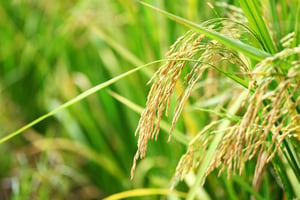 Protection of crop yield is one of the most challenging concerns faced by farmers. Some of the factors that challenge crop protection are changing weather conditions, unplanned seed sowing, unpredicted locus attacks, and irregular irrigation.
Protection of crop yield is one of the most challenging concerns faced by farmers. Some of the factors that challenge crop protection are changing weather conditions, unplanned seed sowing, unpredicted locus attacks, and irregular irrigation.
There is a high-level requirement for crop yield protection because of the increasing demand for quality food and the constantly increasing global population.
It is becoming a crucial need for farmers to shift from conventional monitoring to smart crop monitoring (including advanced technology in farming methods like the Internet of Things) to provide quality production of food.
What Is Smart Crop Monitoring?
Smart crop monitoring refers to the application of advanced technologies such as IoT for controlling the factors affecting the health of crops and leading to degradation in the crop production quality.
The primary goal of the smart crop monitoring system is to ensure maximum efficiency for farmers. Moreover, due to the increasing demand for smart and digital agricultural practices, the global smart crop monitoring market is also growing constantly.
According to a new BIS Research report, the global smart crop monitoring market is expected to reach $3.95 billion by 2027 from a market value of $1.92 billion in 2021.
The market is forecast to grow with a compound annual growth rate (CAGR) of 12.75% during the forecast period from 2022-2027.
Types of Smart Crop Monitoring Solutions
As of today, a wide variety of smart farming techniques allows farmers to complete their day-to-day challenges.
Planting, crop gathering, pest control, watering, and several other data are collected using smart crop monitoring systems and help farmers manage and have better control over these tasks effectively.
Following are some commonly used smart crop monitoring solutions:
- Soil condition monitoring: Soil condition is an essential indicator allowing growers to decide on the accurate planting and crop collection time. With IoT-based sensors performing soil condition monitoring, growers get instant warnings of soil salinity and moisture. Other metrics have an air temperature and soil temperature system that allows farmers to schedule watering times and predict the chances of pests. Soil condition monitoring needs a combination of software and hardware systems to work in real-time and pass the warning to users on any changes.
- Weather monitoring: Weather monitoring in farming is the most used application domain for IoT. In crop farming, yields are dependent on environmental conditions, which are naturally volatile. Weather monitoring systems installed directly in the farming field warn farmers of varying weather conditions such as precipitation, temperature, solar radiation, wind speed, and humidity.
Benefits of Adopting IoT Crop Monitoring Solutions
Here are some ways IoT benefits the agriculture sector and farmers in monitoring crops and managing production quality.
- Maximized productivity: Crop monitoring with the use of IoT helps more effectively in eliminating the expected threats to destroy the crop yield quality by passing regular warnings to the farmers about crop health and helping to take required steps for maximizing productivity.
- Improved quality: IoT crop monitoring systems help maintain optimal conditions to provide adequate crop quality. IoT-based weather monitoring systems in farming help calculate the required supply of chemicals, nutrients, and water to produce high-quality crop yields. Moreover, agriculture products made using IoT monitoring systems can also fulfil market specifications more than other available products.
- Reduced requirements for pesticides: Pesticides are not only toxic, but their use is also much more expensive. IoT-based crop monitoring systems help to reduce the demand for pesticides, the costs involved, and the harmful impact of these chemicals on the farmer's health and environment.
- Better predictability and management: With the help of real-time farming monitoring and data analytics, predicting accurate harvest dates and ensuring the safety of crop production have become much easier for the farmers. Moreover, farmers have better control over the agricultural process.
- Increased sales price: Due to improved quality compared to other food items sold in the market, the sale price of food products grown using the latest advanced technologies is higher and generates more revenue for the farmers.
To conclude, adopting a smart crop monitoring system is one the most helpful developments for farmers in standing against the growing global population's increasing demand for quality food.
The adoption of a smart crop monitoring system gives farmers a variety of important benefits and will also help in generating better revenue compared to traditional monitoring systems.
Where to Learn More
For in-depth market research on this rapidly evolving market, see the newly published report Smart Crop Monitoring Market - a Global and Regional Analysis by BIS Research. This 244-page report covers the smart crop monitoring market by application, product, and region, and also includes competitive benchmarking and company profiles.
About BIS Research
BIS Research is a global market intelligence, research and advisory company that focuses on emerging technology trends that are likely to disrupt the market. Its team includes industry veterans, experts, and analysts with diverse backgrounds in consulting, investment banking, government, and academia.

